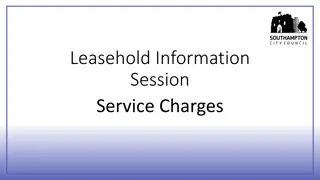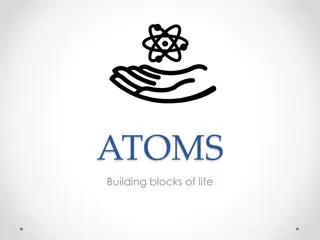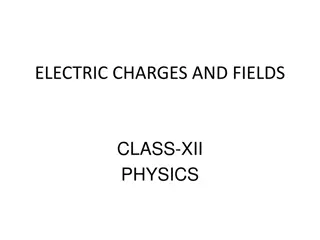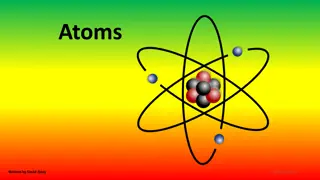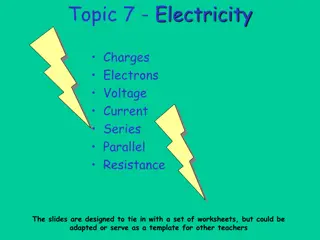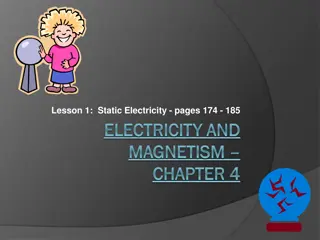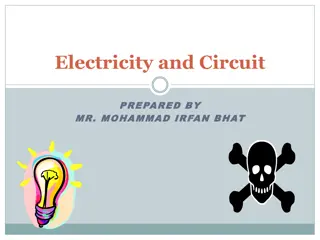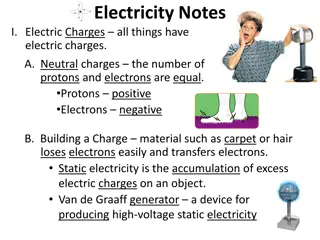Understanding Electricity: Atoms, Circuits, and Charges
Discover the fundamentals of electricity through atoms, circuits, and electric charges. Learn how electrons flow, how circuits are created, and the key elements in a circuit. Explore conductors and insulators, and understand the basic properties of electric charges. Unveil the mysteries behind Coulomb's Law and the Law of Charges.
Download Presentation

Please find below an Image/Link to download the presentation.
The content on the website is provided AS IS for your information and personal use only. It may not be sold, licensed, or shared on other websites without obtaining consent from the author. Download presentation by click this link. If you encounter any issues during the download, it is possible that the publisher has removed the file from their server.
E N D
Presentation Transcript
It is helpful to know about atoms Atoms are small particles that make up all matter It takes billions and billions of them just to make something useful like a pencil. Inside the atom are even smaller objects called electrons, protons, and neutrons. The protons and neutrons stick together in the center of the atom, called the nucleus. The electrons spin fast around the outside. The positive charge of the protons keeps the electrons (negative charge) from flying off and leaving the atom.
Electricity is the flow of electrons The electrons in the atom are where electricity gets its name. When a force is applied, sometimes electrons can come loose and move to another atom. When electrons are moving from one atom to the other in the SAME direction, this is called electricity.
We make electricity by creating an electric circuit When you turn a light on in your house, you flip the switch "on . You are completing the electric circuit and causing electricity and electrons to flow through the light bulb, turning the light "ON." Electricity will only flow through a closed circuit.
Key Elements in a Circuit Power source: Could be a battery or your wall outlet Conductor: The wires that carry the electricity from place to place Load: what the electricity is powering, like a light bulb Switch: The switch that connects the circuit together to start the electricity flowing
What is a conductor? What is an insulator? A Conductor allows electricity to flow through it An insulator prevents the flow of electricity through it. Examples: Examples: Rubber Metal Wood Graphite (in pencils) Some plastics Water insulation Humans
Electric Charge basic property of subatomic particles Things that are negatively charged and things that are positively charged pull on or attract each other. This makes electrons (- charge) and protons (+ charge) stick together to form atoms. Things that have the same charge push each other away or repel each other. This is called the Law of Charges. It was discovered by Charles Augustin de Coulomb. The law that describes how strongly charges pull and push on each other is called Coulomb's Law.
Batteries A battery is a device that stores chemical energy and converts it to electrical energy. Whenever a battery is connected in a closed circuit, a chemical reaction inside the battery produces electrons. The electrons produced in this reaction collect on one terminal of the battery. Next, electrons move from this terminal which is overloaded with electrons, through the circuit, to the other terminal to equalize the pressure. This flow of electrons is electricity!



